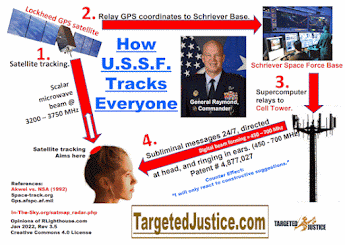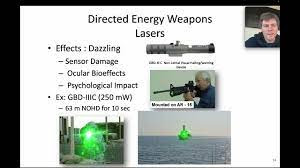Patent No. 5864517 Pulsed combustion acoustic wave generator
Patent No. 5864517
Pulsed combustion acoustic wave generator (Hinkey, et al., Jan 26, 1999)
Abstract
A pulsed combustion acoustic wave generator includes a tubular barrel having an inlet end and an open outlet end, a fuel controller for metering a controlled quantity of fuel into the inlet end of the barrel, an oxidant controller for metering a controlled quantity of oxidant into the inlet end of the barrel and an igniter extending into the inlet end of the barrel that is controllable by an operator to ignite a mixture of fuel and oxidant in the inlet end.
Notes:
FIELD
OF THE INVENTION
The subject invention pertains to a compact device designed to generate repetitive
high amplitude acoustic pulses or pressure waves which may be utilized in a
variety of applications.
SUMMARY OF THE INVENTION
A pulsed combustion acoustic wave generator which includes a tubular barrel
having an inlet end and an open outlet end, a fuel controller for metering a
controlled quantity of fuel into the inlet end of the barrel, an oxidant controller
for metering a controlled quantity of oxidant into the inlet end of the barrel
and an igniter extending into the inlet end of the barrel that is controllable
by an operator to ignite a mixture of fuel and oxidant in the inlet end.
The pulsed combustion acoustic wave generator of the present invention is based
on pulse detonation and pulse jet technology which enables the production of
strong acoustic impulses. These impulses are adjustable in peak pressure levels
and repetition rates to suit different applications regarding the non-lethal
incapacitation, impairment, or immobilization of individuals and material targets,
crowd control and dispersal, and self defense capability. The present invention
can be adjusted in size and operation to provide different levels of acoustic
power which can quickly be changed. In addition, the acoustic energy may be
directed to some degree, thereby enhancing effectiveness.
--------------------
Recent use of loud music for psychological warfare in Panama and Waco, Tex.,
demonstrates the potential of using acoustics for disrupting sleep, disturbing
thought patterns, and causing disorientation. The present invention would be
ideal for this role, as its acoustic power and speed of pulsing could be varied
drastically depending on need, it could run in repeating mode indefinitely as
long as fuel is available, and its impulsive noise is very difficult to shut
out. A device could be set to steadily increase noise levels with a random time
between pulses until the target of its emissions surrenders or leaves. Steady-state
high frequency noise could be reduced and canceled through electronic means,
but high amplitude low frequency transient noise cannot be effectively attenuated
in this manner. In addition, sound suppressers (i.e. headphones, earplugs) are
probably not capable of reducing the noise level enough to render it ineffective.
WACO, THE BIG LIE 1993
— Redpill Drifter (@RedpillDrifter) January 21, 2024
Linda Thompson
This was one of the first tapes that actually got to the average joe about the slaughter of the Branch Davidians. This video sparked a massive patriot movement in the 1990s after our government murdered innocent civilians
Part 2 below pic.twitter.com/wQjzBjtPNv
WACO, THE BIG LIE CONTINUES PART 2 1994
— Redpill Drifter (@RedpillDrifter) January 21, 2024
Linda Thompson
Linda followed up "Waco The Big Lie part 1" with rebuttals to those who attacked her first film and declared everyone who was critical to be part of the coverup of the murder of innocent civilians by the US government pic.twitter.com/SMaj1HAzTM
The subject invention could be designed to propagate its pulsed acoustic emissions into water where the wave will travel very quickly for long distances. The ability to generate, repetitive high amplitude underwater acoustic pulses at any rate desired could be useful for decoys or to drown out noises which could otherwise be detected and identified, such as submarines or surface ships. Another important application in this area is that of civilian or military rescues where a device could produce discrete, high amplitude underwater acoustic waves which could be detected at large distances, thereby aiding in location in maritime emergencies.
The present invention may be capable of setting off contact and pressure triggered underwater mines in the same manner as land mines. High amplitude sound waves, like those created by this invention, propagate very well under water. As the waves strike the mine surface and reflect, sharp impulses would be delivered to the triggering mechanism. As with land mines, the present invention may trigger the mine without the use of conventional explosives which could mask the explosion and are dangerous to carry and place near the mine.
In mountain passes, recoilless howitzers and explosive charges placed on the slopes are used to trigger avalanches in a controlled manner. The sound pressure delivered by this invention may be enough to trigger avalanches without having to resort to expensive and dangerous solid explosives. By varying the frequency of pulses across a wide range, the device could create a harmonic vibration in the snow pack, increasing the likelihood of forcing the snow pack to avalanche.
This invention can function as an acoustic cleaner in power generation facilities. Deposits on the interior heat-transfer and structural surfaces can decrease the efficiency of a heat exchanger and increase the rate of corrosion. By producing low frequency, high amplitude acoustic waves, the subject invention would cause particulate and slag deposits to resonate and dislodge from the surface without having to resort to expensive steam cleaning.
The subject invention could be used in much the same manner for animal control purposes as it could for crowd control. A fixed or mobile unit could be used to scare wildlife or birds away from an airport runway and units suspended from helicopters could be used to herd wild animals without resorting to gunfire.
By introducing sound waves into the ground and recording their reflections, scientists can determine the composition of the earth's sublayers, without drilling for samples. Explosives and large "thumper" trucks are currently used to generate sound waves, but the invention could generate precise sound waves at exact intervals to increase the amount of information that could be gained from these studies. Such a device may be significantly less expensive than a "thumper," and is easier and safer to work with than conventional explosives.
The invention's ability to generate precise high amplitude pressure waves in air could be utilized to create these waves in any gas, liquid, or solid material at exact intervals and at significant amplitudes. This ability translates to an inexpensive and precise acoustic emitter for use in acoustic research such as mechanical and electronic noise attenuation and shock wave propagation.
---------------------------------------------
While
the preferred embodiment of the invention has been illustrated and described,
it will be appreciated that various changes can be made therein without departing
from the spirit and scope of the invention.






Comments